Veronique is a global leader in postsurgical compression garments. For over two decades, Veronique has catered to the needs of patients undergoing aesthetic and reconstructive surgeries. The brand has a diverse range of products available for men that are created with breathable fabric that is both comfortable and functional.
The postsurgical garments are aimed at improving blood circulation, scar treatments, reduce swelling after surgeries, expedite the healing process, and allow patients to return to their daily routines sooner. Also, the garments are skin retracting and body shaping, so they are easily concealable.
Design Veronique features a large range of unique compression garments. Virtually all garments are available in eight sizes and in three colours (beige, white, and black). The different varieties of products focus on the following body parts:
The postsurgical garments are aimed at improving blood circulation, scar treatments, reduce swelling after surgeries, expedite the healing process, and allow patients to return to their daily routines sooner. Also, the garments are skin retracting and body shaping, so they are easily concealable.
Design Veronique features a large range of unique compression garments. Virtually all garments are available in eight sizes and in three colours (beige, white, and black). The different varieties of products focus on the following body parts:
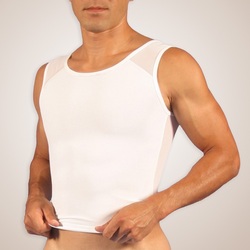
Chest - Male Compression Vest
There are seven different types of postsurgical compression garments which range from tank top to compression tee-shirts that provide compression and support to the chest area. The primary purpose of the Veronique’s chest line is to provide support after male liposuction (chest, flank, abdominal), gynecomastia, and pectoral implants. The various chest garments have reinforced flat seams and are designed to be easily worn under clothes.
There are seven different types of postsurgical compression garments which range from tank top to compression tee-shirts that provide compression and support to the chest area. The primary purpose of the Veronique’s chest line is to provide support after male liposuction (chest, flank, abdominal), gynecomastia, and pectoral implants. The various chest garments have reinforced flat seams and are designed to be easily worn under clothes.

Dorsocervical - Zippered compression vest with arms
Venronique’s Dorsocervial Male Garment is utilised to assert pressure on areas that have incurred surgery in the dorsocervical region. Recommend for those that have incurred fat pad or buffalo hump removal surgeries. The garment is essential in establishing compression over a surgical site in the dorsocervical region during recovery. The product is excellent for both rehabilitation and comfort.
Venronique’s Dorsocervial Male Garment is utilised to assert pressure on areas that have incurred surgery in the dorsocervical region. Recommend for those that have incurred fat pad or buffalo hump removal surgeries. The garment is essential in establishing compression over a surgical site in the dorsocervical region during recovery. The product is excellent for both rehabilitation and comfort.
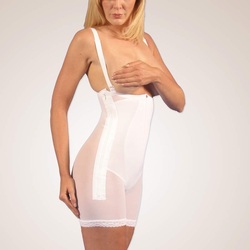
Abdomen - Female zipped abdominal girdle
There are over eight abdomen related postsurgical compression products in Veronique’s product line. Recommended for patients that are about to undergo abdominal liposuction, flank liposuction, love handles, tummy tuck, and abdominoplasty. These products ensure that patients don’t face any problems with blood circulation and accelerates the healing process which allows patients to return to daily routines as soon as possible.
There are over eight abdomen related postsurgical compression products in Veronique’s product line. Recommended for patients that are about to undergo abdominal liposuction, flank liposuction, love handles, tummy tuck, and abdominoplasty. These products ensure that patients don’t face any problems with blood circulation and accelerates the healing process which allows patients to return to daily routines as soon as possible.

Gluteus - Zipped abdominal / chest garment
The “Zippered Gluteus Garment” is Veronique’s only compression garment focused on gluteus related surgeries for men. The Zippered Gluteus Garment keeps surgically corrected tissues in place and ensures their healing as a whole anatomic unit. The garment provides for support after buttock augmentation and reduction treatments.
The “Zippered Gluteus Garment” is Veronique’s only compression garment focused on gluteus related surgeries for men. The Zippered Gluteus Garment keeps surgically corrected tissues in place and ensures their healing as a whole anatomic unit. The garment provides for support after buttock augmentation and reduction treatments.
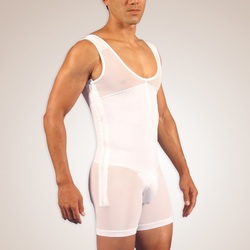
Scrotum - Zippered abdominal garment
There is only one type of postsurgical compression garment for the scrotum. The Scrotum Plastic Support garment is designed to be worn over a separate primary postsurgical garment. It should be used primarily after abominoplasty or liposuction of the upper body, mid body, chest, abdomen, and flank. The Scrotum Plastic Support reduces post-operative swelling that can spread and descend to the genital are due to gravity.
There is only one type of postsurgical compression garment for the scrotum. The Scrotum Plastic Support garment is designed to be worn over a separate primary postsurgical garment. It should be used primarily after abominoplasty or liposuction of the upper body, mid body, chest, abdomen, and flank. The Scrotum Plastic Support reduces post-operative swelling that can spread and descend to the genital are due to gravity.
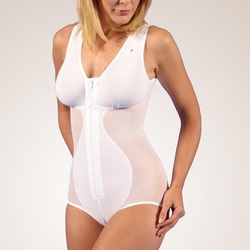
Full Body - Zippered high back torso brief with bra
The full body compression garment is primarily used to aid areas that have incurred surgery. Veronique’s full body compression garment acts as a moulding device that ensures that they curves that were augmented come out perfect after the healing process is complete. This garment provides great support to those that are about to incur gynecomastia or liposuction.
All of the products featured are available online and are recommended by a large proportion of hospitals and plastic surgeons.
The full body compression garment is primarily used to aid areas that have incurred surgery. Veronique’s full body compression garment acts as a moulding device that ensures that they curves that were augmented come out perfect after the healing process is complete. This garment provides great support to those that are about to incur gynecomastia or liposuction.
All of the products featured are available online and are recommended by a large proportion of hospitals and plastic surgeons.
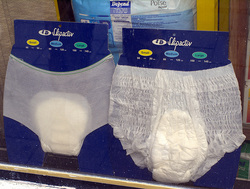
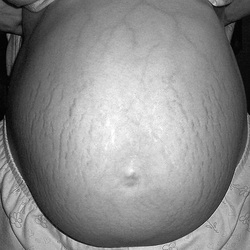
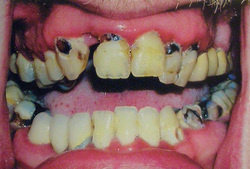


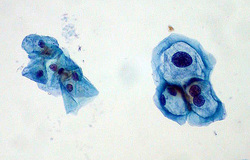
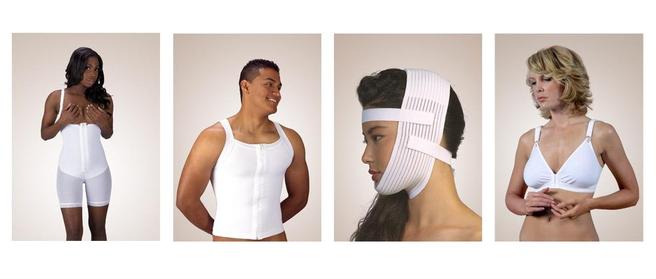
 RSS Feed
RSS Feed